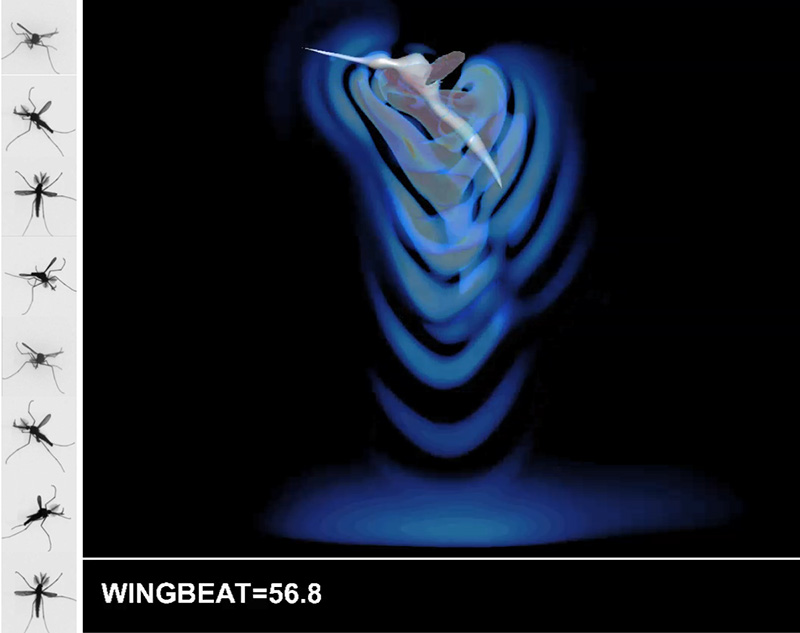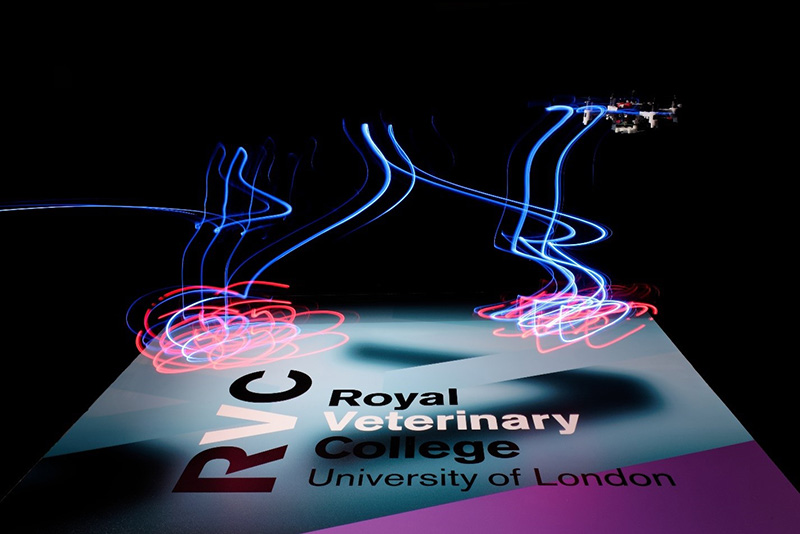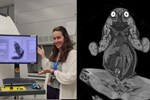Can mosquitoes stop us going bump in the night?
In a new paper published in Science, an international, collaborative research group led by the Royal Veterinary College (RVC) has demonstrated how the mosquito avoids obstacles in the dark by sensing changes in the airflows generated by its flapping wings.
The researchers used these principles to develop a mosquito-inspired quadcopter equipped with an elegant collision-avoidance sensory system - which encodes aerodynamic information on the fly.
Nocturnal mosquitoes navigate in the dark without crashing into surfaces. When they land on humans or other animals to feed, they do it very gently in order to remain stealthy; being noticed could spell disaster. Since these nocturnal mosquitoes cannot see what they are doing with their eyes, they use a different sensory mode - mechanosensing.

A team of researchers from Professor Richard Bomphrey’s group at the RVC’s Structure and Motion Laboratory collaborated with Toshiyuki Nakata from Chiba University, Patrício Simões and Ian Russell from the University of Brighton, and Simon Walker from the University of Leeds, to investigate this sensory mechanism in the male Culex quinquefasciatus mosquito to develop a bio-inspired collision-avoidance system for an autonomous quadcopter.
Mosquitoes, and other flying animals, fly by accelerating the air around them, creating fast jets beneath each flapping wing. These jets change shape in the presence of obstacles such as the ground or walls. Thanks to an exquisitely sensitive array of receptors at the base of the antennae on mosquitoes' heads, called the Johnston’s organ, the mosquito is capable of detecting these changes in airflow patterns. The researchers called this "aerodynamic imaging" as it gives the mosquito a picture of the world around them even in the dark and when they cannot feel surfaces by physical contact.
The team used computational fluid dynamics simulations, based on high-speed recordings of mosquito flight, to investigate the effects of the ground and walls on airflows around the body. They discovered a trend: the Johnston’s organs on the antennae detect airflow changes very easily at low altitude, with the response diminishing at higher altitudes, until the threshold for detection is not met.
They were surprised to see that one of the locations with the largest differences in airflow patterns occurs above the head, which means that the insects’ antennae were optimally positioned to sense these changes despite being farthest away from the ground.
Aeroplane and helicopter pilots will be familiar with a phenomenon called ‘ground effect’ which tends to come into play when very close to the ground, usually noticeable at an altitude lower than two wing lengths. Using their new data, the researchers predicted the maximum distance at which the Culex mosquito can detect surfaces: more than 20 wing lengths, which is far larger than the expected distance for detection based on existing aerodynamic models.

Lead author Dr Toshiyuki Nakata, who was funded by the BBSRC to investigate the aerodynamics of mosquitoes and other insects, said:
"With our simulation results, I was simply amazed by the precision of mosquitoes to avoid surfaces around them. If we look at the ground effect in the context of conventional aerodynamics, the distance to the floor detected by the flying mosquito is enormous.”
The team’s next step was to transfer the concept of aerodynamic imaging to a miniature quadcopter. They fitted the vehicle with a bio-inspired sensor device made from an array of probe tubes connected to differential pressure sensors. By measuring the airflow velocities around the quadcopter, the researchers identified where to place the probes for maximum sensitivity. The device was flown near the ground and walls first tethered, then piloted, and, finally, autonomously.
This simple model was able to detect surfaces and raise the alarm successfully at distances sufficient to avoid obstacles when approaching the ground and walls. Unlike previous surface-sensing quadcopter studies, this model requires only basic thresholds with little to no processing to function. It is lightweight, power-efficient, and scalable.
Professor Richard Bomphrey, Professor of Comparative Biomechanics at the RVC, said: "It's important to understand how such a significant group of insects navigate around the world. If we are to live in a future where ever more work is done by flying vehicles and drones, it could be useful to take some inspiration from mosquitoes to make our machines safer when operating close to buildings or other infrastructure.
"There is no reason to stop at small fliers, this surface detection capability could be scaled-up to helicopters, making them a little safer when flying in treacherous, low-visibility conditions."
Research reference
The full paper, titled Aerodynamic imaging by mosquitoes inspires a surface detector for autonomous flying vehicles, will be published on the 8th of May.
The project was supported by the BBSRC, Dstl, the Royal Society, and the University of Brighton.
Notes to Editors
For more information please contact:
- Jasmin De Vivo (Jasmin.DeVivo@plmr.co.uk)
- Press Line: 0800 368 9520
About the RVC
- The Royal Veterinary College (RVC) is the UK's largest and longest established independent veterinary school and is a Member Institution of the University of London. It was the first in the world to hold full accreditation from AVMA, EAEVE, RCVS and AVBC.
- The RVC is the top veterinary school in the UK and Europe, and ranked as the world’s second highest veterinary school in the QS World University Rankings by subject, 2020.
- The RVC offers undergraduate and postgraduate programmes in veterinary medicine, veterinary nursing and biological sciences.
- In 2017, the RVC received a Gold award from the Teaching Excellence Framework (TEF) – the highest rating a university can receive.
- A research led institution with 79% of its research rated as internationally excellent or world class in the Research Excellence Framework 2014.
- The RVC provides animal owners and the veterinary profession with access to expert veterinary care and advice through its teaching hospitals and first opinion practices in London and Hertfordshire.
You may also be interested in:
-
Hop to it: New research explores the muscle anatomy of frogs in relation to their movement
Researchers from the Royal Veterinary College (RVC) and UCL have uncovered anatomical differences …

